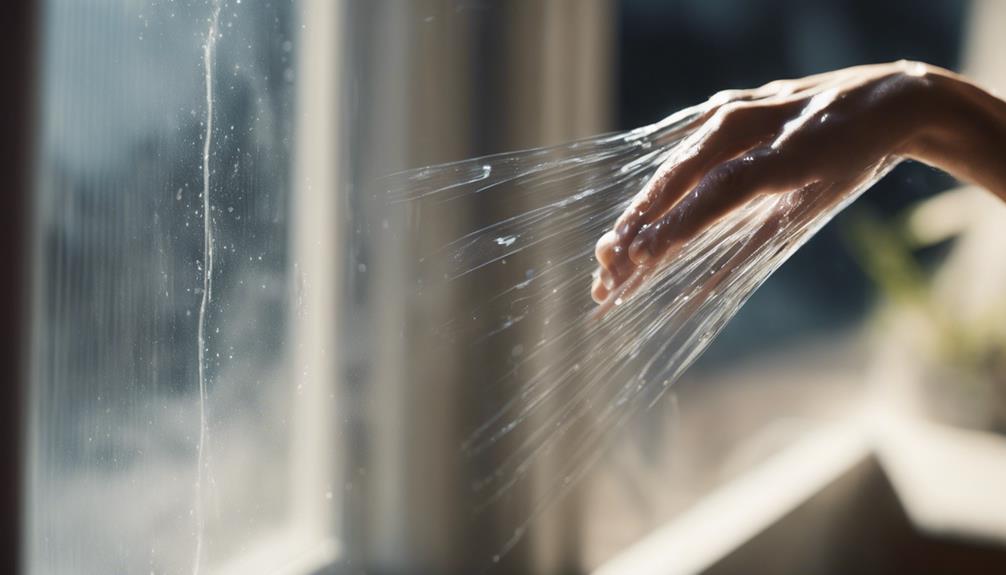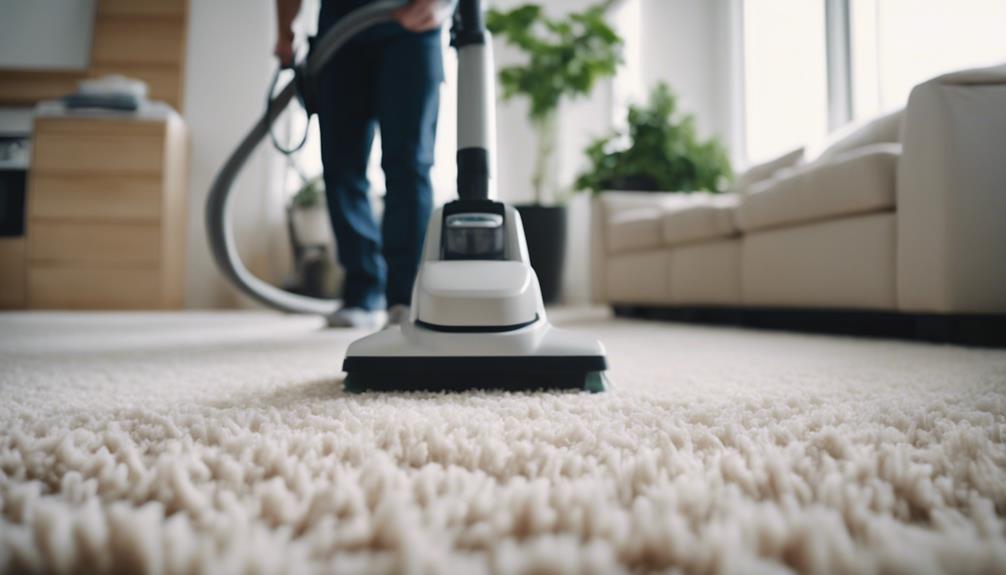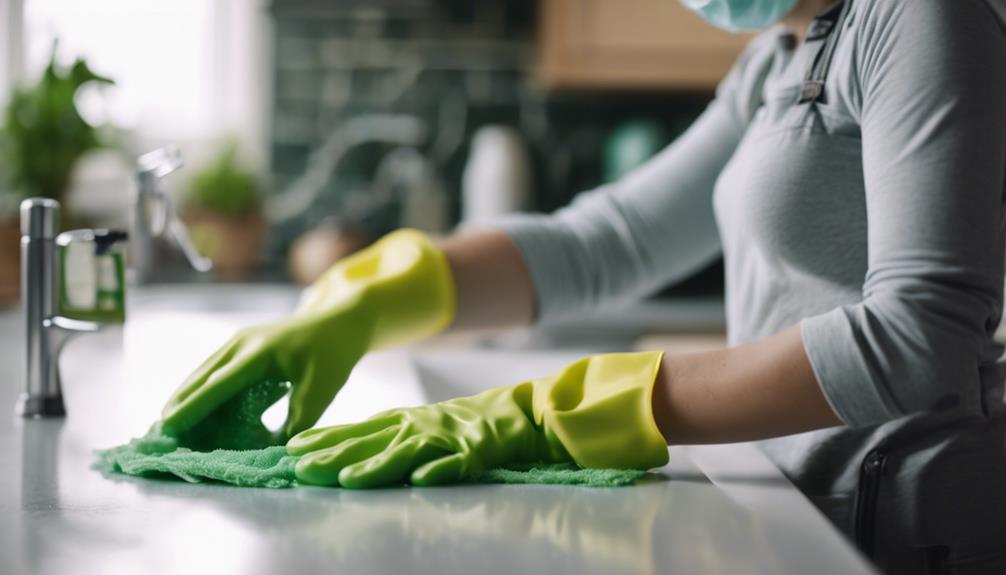To prevent aquatic nuisance species spread, clean your boat after each use. Thoroughly rinse it, especially the hull and motor, with hot water. Drain all water in the motor, bilge, and bait containers. Dispose of bait properly. Proper drainage is key – leave nothing behind. Refill bait containers with dechlorinated tap water. Make sure no live fish or organisms go into new water bodies. Dry equipment for at least five days. Report invasive species sightings and comply with state laws. Before launching, inspect gear thoroughly. Wash with hot water and dry well. Follow these steps, and you'll help protect water ecosystems.
Key Takeaways
- Clean your boat immediately after each use to prevent the spread of aquatic nuisance species.
- Thoroughly inspect and clean your boat before moving it to a new body of water.
- Implement proper drainage and drying techniques to eliminate potential hitchhikers.
- Regularly check and clean all equipment, including trailers and fishing gear, for invasive species.
- Adhere to Washington state laws and regulations to ensure compliance with aquatic nuisance species laws.
Clean and Inspect Your Boat
To prevent the spread of aquatic nuisance species, make sure you thoroughly clean and inspect your boat before leaving the ramp area. Start by cleaning your boat to remove visible aquatic plants, animals, and mud from both the hull and equipment. This step is important in preventing the transport of invasive species from one body of water to another.
Rinse the boat hull with hot water and flush the motor for at least 2 minutes to eliminate any potential hitchhikers that might be clinging on. By taking the time to properly clean your boat, you're actively contributing to the protection of our waterways from harmful invaders.
Remember to drain all water-containing devices such as the motor, bilge, livewell, and bait containers to make sure no aquatic species are unintentionally transported. Properly disposing of unwanted bait and organisms in the trash further safeguards native ecosystems from invasive species establishment.
Proper Drainage Techniques

When draining water from your boat, remember to empty all water-containing devices completely to prevent the spread of aquatic nuisance species.
Confirm that no water is left behind to eliminate any small organisms that could be transported to new water bodies.
Replacing water in bait containers with dechlorinated tap water is a simple yet effective way to avoid introducing invasive species to different locations.
Effective Drainage Methods
Proper drainage techniques play an important role in preventing the spread of aquatic nuisance species by ensuring all water-containing equipment is emptied effectively.
When cleaning your boat hulls, be watchful for visible aquatic plants that may harbor invasive species. Make sure to drain all water from motor compartments, bilges, livewells, and any other water-containing devices before leaving a water access point.
Remember to empty bait containers completely and refill them with dechlorinated tap water to minimize the risk of introducing harmful organisms. Never release live fish or organisms into different water bodies to prevent the spread of invasive species.
Preventing Invasive Species
Implement effective drainage techniques to prevent the spread of aquatic invasive species and protect native ecosystems. Proper drainage involves emptying all water-containing equipment like motors, bilges, livewells, and bait containers.
By draining these devices and replacing water with dechlorinated tap water, you can reduce the risk of introducing invasive species to new water bodies. It's essential to ensure thorough drainage to eliminate small organisms that might carry invasive species.
This step is a vital part of the Clean, Drain, Dry routine, which aims to stop the spread of aquatic hitchhikers and safeguard native biodiversity.
By following proper drainage procedures, you can help prevent the accidental release of nuisance species and preserve the delicate balance of aquatic environments.
Proper Water Elimination
To effectively prevent the spread of aquatic invasive species, make sure thorough water elimination from all equipment and containers used in water bodies. Drain all water from your boat, motor, bilge, live wells, and bait containers to avoid transporting aquatic hitchhikers.
It's essential to remove all water to prevent the survival and spread of small organisms that may be present. Remember to refill bait containers with dechlorinated tap water and refrain from releasing live fish or organisms into new environments.
Importance of Thorough Drying

You must understand the significance of thorough drying to prevent the spread of aquatic nuisance species. Proper drying methods, such as leaving equipment to dry for at least five days or using hot water, are essential in eliminating potential hitchhikers.
Drying for Invasive Prevention
Thorough drying for at least five days is a critical step in preventing the spread of aquatic invasive species. Drying equipment properly helps eliminate small organisms that may be hitchhiking. Hot water (at least 120°F) can be used to kill any remaining organisms during the drying process. Avoid using chemicals during the drying process to prevent damage to the equipment and the environment. Proper drying of equipment, including boats and gear, is a key step in protecting water ecosystems from invasive species.
To visually represent the importance of drying for invasive prevention, let's look at a simple comparison between proper drying techniques and potential risks of not drying correctly:
| Proper Drying Techniques | Risks of Inadequate Drying |
|---|---|
| Thorough drying for 5 days | Invasive species spread |
| Hot water treatment (120°F) | Hitchhiking organisms survive |
| Avoiding chemical use | Equipment and environment damage |
Effective Drying Techniques
Properly drying equipment for at least five days is vital in preventing the survival and spread of aquatic hitchhikers. Thorough drying helps eliminate any potential invasive species that might be clinging to your gear.
To effectively kill organisms, consider using hot water at a temperature of at least 120°F during the drying process. It's crucial to avoid using chemicals that could harm your equipment while drying, as the goal is to prevent the spread of invasive species without causing damage.
By following proper drying techniques, you not only protect native ecosystems but also reduce the risk of accidentally releasing nuisance species into new environments.
Remember, complying with state laws, such as those in Washington, that regulate the transport of aquatic nuisance species is another reason why thorough drying is so important.
Reporting Invasive Species Sightings

To help protect our local ecosystems, promptly report any sightings of invasive species to the appropriate authorities.
If you come across a new sighting of an invasive species, it's essential to act promptly. Saving a specimen and reporting it to local authorities can assist in managing and preventing the further spread of these harmful species.
By collaborating with natural resource offices or Sea Grant programs, you can effectively share information about new sightings and contribute to early detection efforts.
Reporting these invasive species not only helps safeguard native ecosystems but also preserves biodiversity.
Remember to take photographs and note the exact location of the invasive species you've spotted. Providing accurate information on the location and visual evidence can greatly support management efforts aimed at controlling and eradicating invasive species from our waters.
Your vigilance in reporting sightings plays a critical role in protecting the delicate balance of our aquatic environments.
Explore Conservation Efforts

Discover the collaborative conservation efforts that aim to protect and enhance wildlife habitats and ecosystems. Working alongside others, you can play a pivotal role in conserving and safeguarding the natural environment, ultimately benefiting fish, wildlife, and plant habitats. By staying informed about ongoing conservation efforts, you actively contribute to the well-being of the American people and the preservation of ecosystems.
One key aspect of these conservation endeavors is the management of invasive species. These non-native species can greatly impact local flora and fauna, disrupting delicate ecological balances. By participating in efforts to track, report, and manage invasive species, you help lessen their harmful effects on the environment.
Organizations like Stop Aquatic Hitchhikers provide valuable resources and information on preventing the spread of aquatic nuisance species, empowering individuals to take action in safeguarding water bodies from invasive threats.
Stay engaged, report sightings, and support conservation initiatives to guarantee the protection and sustainability of our natural resources.
Washington State Law Compliance

You need to understand Washington state regulations to comply with laws regarding aquatic nuisance species.
These laws apply to various equipment like boats, trailers, and fishing gear.
Make sure your trailered vessel has the necessary documentation to prove it's free of nuisance species.
Legal Compliance Overview
Adhering to Washington state law on aquatic nuisance species transport is necessary for ensuring legal compliance and protecting the local water ecosystems. Stop the spread of harmful species by following regulations that prohibit the transport of aquatic nuisance species, including boats, trailers, fishing gear, and bait wells.
When bringing trailered vessels into Washington, make sure to have documentation proving they're free of nuisance species to prevent their spread within the state. Non-compliance with these laws can result in penalties and detainment by state authorities.
The primary goal of these regulations is to safeguard water ecosystems, prevent the introduction of harmful species, and maintain the diversity of native aquatic life. Understanding and complying with these laws is essential for legal adherence and plays a pivotal role in the conservation of aquatic environments.
Stay informed and take the necessary steps to protect Washington's precious water ecosystems.
Washington State Regulations
To comply with Washington state regulations on aquatic nuisance species transport, make sure that all boats, trailers, fishing gear, and bait wells are free of harmful species before entering the state. Washington state law strictly prohibits the transport of aquatic nuisance species to safeguard the local water ecosystems.
Trailered vessels must carry documentation confirming their cleanliness to adhere to state regulations upon entry into Washington. Failure to comply with these laws can lead to penalties, such as being detained by state authorities.
Understanding and following Washington state regulations is essential for preserving the health of water habitats and preventing the spread of harmful species. Proper disposal methods, adherence to local guidelines, and responsible behavior are key components in meeting Washington's legal requirements concerning aquatic nuisance species.
Prevention Steps Before Launching

Before launching, it's necessary to take preventive steps to stop the spread of aquatic nuisance species. To make sure you aren't unintentionally transporting harmful organisms to new bodies of water, follow these important steps:
- Inspect Thoroughly: Check all your gear, from boats to clothing, for any visible plants, fish, or animals that could be clinging on.
- Remove Hitchhikers: If you spot any potential stowaways, make sure to eliminate them before leaving the area.
- Drain Properly: Remove all water from your equipment and drain bilges away from water bodies to prevent the transfer of invasive species.
- Clean and Dry: Wash all items that have been in contact with water using hot water and allow them to completely dry for at least five days before entering new waters.
Effective Cleaning Procedures

For effective cleaning procedures to prevent the spread of aquatic nuisance species, it's essential to prioritize examining and cleaning your equipment thoroughly before leaving the ramp area.
Utilizing hot water is a highly effective method for cleaning boats, motors, trailers, anchors, and nets. Consider pressure washing the hull, motor, and gear that have been exposed to water to remove any potential hitchhikers.
It's essential to pay special attention to cleaning the propeller area and hull bottom to ensure a thorough cleaning process. Remember that allowing at least five days for thorough drying is crucial before entering new waters.
Alternatively, using hot water at a temperature of at least 120°F can effectively eliminate any organisms present. By incorporating these cleaning procedures, especially the use of hot water, you can greatly reduce the risk of spreading aquatic nuisance species to new environments.
Responsible Disposal Practices

Examine the proper disposal practices to prevent the accidental release of aquatic nuisance species into new bodies of water.
When it comes to proper disposal methods for aquatic hitchhikers, it's important to follow local guidelines and take responsible actions to protect native ecosystems. Here are four key points to keep in mind:
- Dispose of potential hitchhikers at the site they were found: By disposing of aquatic plants, fish, or animals at the location where they were discovered, you can prevent their unintentional release into new bodies of water.
- Follow local guidelines for proper disposal methods: Different regions may have specific protocols for disposing of nuisance species, so make sure to adhere to these guidelines to ensure responsible disposal practices.
- Prevent the accidental release of nuisance species: By taking the necessary steps to dispose of aquatic hitchhikers properly, you can help stop the spread of invasive species and protect the biodiversity of our waterways.
- Protect native ecosystems: Responsible disposal methods play an important role in safeguarding the delicate balance of native ecosystems from the harmful effects of nuisance species. By following appropriate disposal practices, you contribute to the preservation of our aquatic environments.
Accessing Resource Information

To access valuable information on aquatic invasive species and conservation efforts, visit the WDFW Aquatic Invasive Species website. This resource hub provides detailed insights into identifying and preventing the spread of nuisance species.
By exploring the website, you can access resources that explore the harmful impact of invasive species on aquatic environments. Additionally, the site offers guidance on reporting and managing nuisance species effectively.
Stay updated on the most recent regulations and best practices for thwarting the dissemination of aquatic invasive species by leveraging the information available on the WDFW platform.
Not only can you educate yourself on the subject of nuisance species, but you can also learn about conservation efforts aimed at safeguarding native ecosystems from invasive intruders. Take advantage of the wealth of knowledge provided on the WDFW website to become a proactive guardian of our aquatic environments.
Frequently Asked Questions
Which Is the Best Way to Stop the Spread of Aquatic Nuisance Species?
The best way to stop the spread of aquatic nuisance species is by following the Clean, Drain, Dry routine. Washing your boat before leaving the ramp area and properly disposing of potential hitchhikers are essential steps in preventing the spread of invasive species.
Which of the Following Is the Best Way to Prevent the Spread of Aquatic Nuisance Species Like Zebra Mussels?
To prevent the spread of aquatic nuisance species like zebra mussels, the best way is to thoroughly inspect your boat, remove all visible plants and animals, drain all water, wash with hot water, and dispose of unwanted items properly.
How Can We Stop the Spread of Aquatic Invasive Species?
To stop the spread of aquatic invasive species, inspect your equipment for plants, animals, and mud before leaving. Properly dispose of bait and clean your boat and trailer at the ramp. Follow the Clean, Drain, Dry routine.
Which of the Following Action Should Be Taken to Prevent the Spread of Aquatic Nuisance Species Throughout Washington's Waterways?
To prevent the spread of aquatic nuisance species throughout Washington's waterways, you must thoroughly inspect your boat, gear, and bait wells before leaving. Confirm they are free of any hitchhiking species. Use hot water for cleaning to protect the ecosystems.
Conclusion
Now that you know the best time to clean your boat, envision this: sparkling, pristine waters free of invasive species.
By taking simple steps like cleaning, draining, and drying your boat properly, you're playing a vital role in preserving our aquatic ecosystems.
Remember, every action counts in protecting our waters and ensuring a vibrant environment for future generations to enjoy.
So, next time you head out on the water, make sure your boat is clean and ready to go!










